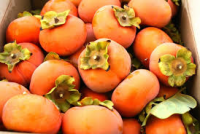
February 2- February 8, 2014
Market Outlook
Lettuce:
The Iceberg market is steady at lower levels. We are seeing good quality on inbound.
Leaf:
Leaf market is steady at lower levels. Overall quality is good.
Broccoli:
Broccoli market is at the bottom. Quality has been very good.
Cauliflower:
The cauliflower market is lower. Supplies are improving. Quality has been good.
Carrots:
Carrot market has remained steady out of Georgia this week with very good quality.
Celery:
The Celery market is steady. We are seeing good quality out of both California and Florida.
Strawberries:
Strawberry market has come off some. Wide range in quality.
Potatoes:
The market on cartons has remained steady for next week.
Onions:
The market on onions continues to increase slightly for next week. Market is expected to level off for about two weeks, and then likely increase.
Citrus:
The Lemon and Orange market remains strong due to prior cold weather in the growing region. Shippers are struggling to come up with small fruit on both lemons and oranges. 138 size oranges and 200/235 lemons are particularly difficult to source.
Cucumbers:
The Cucumber market has come off a bit as weather in Florida has improved. Quality has been good.
Peppers:
Pepper market has also dropped off with plenty of quantity available. Quality has been very good with no issues.
Tomatoes:
Tomato market is active. Cost is up a few dollars across all lines. Quality has been very good.
Green beans are extremely limited and quality is only fair which is affecting availability on Snipped beans. Processors are pro-rating/ delaying and in some cases having to cancel orders.
Feature of the Week
This week Primo is featuring persimmons. It’s important you know there are two kinds of persimmons: the Fuyu, the kind you can eat right away, and the Hachiya, the kind you can’t. If you bite into an unripe Hachiya persimmon, it’s as if you just drank six cups of extra strength tea. This astringent flavor is due to the high level of tannin in the fruit, and there is a good chance that you would never try a persimmon again because it tastes so bitter. This would be a shame because ripe persimmons have an exceptional flavor and provide us with important nutrients such as beta-carotene, Vitamin C and potassium.
Recipe of the Week
Pork with Persimmons and Mustard Greens
Ingredients
2 pounds pork loin, tied
Coarse salt and freshly ground pepper
1 pound persimmons, tops trimmed, cut into 1 1/2-inch wedges
6 garlic cloves, peeled
1 tablespoon extra-virgin olive oil
1 bunch (14 ounces) mustard greens, large stems removed
1/2 cup Marsala wine
Directions
Step 1
Preheat oven to 425 degrees. Season pork with 1 1/2 teaspoons salt and 1/2 teaspoon pepper. Place pork in a 12-inch cast-iron or other heavy ovenproof skillet.
Step 2
Toss persimmons and garlic with oil; season with salt and pepper. Scatter around pork. Roast 15 minutes. Turn over persimmons, and continue to roast until pork reaches an internal temperature of 125 degrees, 20 to 25 minutes. Transfer pork to a cutting board, tent with foil, and let rest 15 minutes (pork will continue to cook as it cools). Meanwhile, if persimmons are still firm, roast until fork-tender.
Step 3
Transfer persimmons to a serving platter. Add mustard greens to pan. Season with salt, and saute over medium heat until tender, about 2 minutes. Transfer greens to platter. Add wine to pan, and cook until reduced by two-thirds. Thinly slice pork, and arrange on top of the persimmons and greens. Spoon sauce over top, and serve.
Fun Facts of the Week
-
Tea can be made from fresh or dried persimmon leaves
- Persimmons were introduced to the United States from China in the 1800s
- During the Civil War, some Southern families boiled, roasted, and ground persimmon seeds to produce a drink similar to coffee


